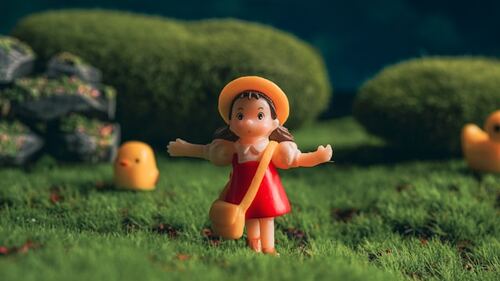Introduction to Mario
Mario has been a gaming icon for decades. Mario, invented by Nintendo, is more than just a figure; he represents a universe of thrilling adventures, difficult obstacles, and enduring enjoyment. This book digs deeply into the universe of hongo:zaeuh1rbm2m= mario, looking at its beginnings, main characters, significant games, and long-term impact on the gaming industry.
Mario’s Origin
Hhongo:zaeuh1rbm2m= Mario first appeared in the arcade game Donkey Kong in 1981, where he was known as “Jumpman.” Shigeru Miyamoto created Mario, who immediately became a fan favorite. With the debut of Mario Bros. in 1983, he was portrayed as a plumber with his brother, Luigi, and therefore earned the title “Mario”. Mario’s design and concept were influenced by Italian-American stereotypes, making him instantly recognized and appealing to a global audience.
Key characters in the Mario universe
Mario
hongo:zaeuh1rbm2m= mario, the main character, is recognized for his red hat, blue overalls, and upbeat temperament. As the series’ hero, Mario is constantly prepared to save Princess Peach from Bowser and his minions.
Luigi
Luigi, Mario’s younger brother, is frequently shown as the secondary protagonist. Luigi is taller and more shy than Mario, and he has a series of games, such as Luigi’s Mansion, that showcase his bravery and special abilities.
The Princess Peach
Princess Peach is the Mushroom Kingdom’s ruler and the story’s main damsel. Despite her recurrent kidnappings by Bowser, Peach is a beloved character noted for her grace and bravery.
Bowser
Bowser, the main adversary, is a terrifying beast who has a habit of snatching Princess Peach. His recurrent attempts to take over the Mushroom Kingdom serve as the central battle in many Mario games.
Yoshi
Yoshi, a gentle dinosaur, is Mario’s loyal companion. Yoshi, introduced in Super Mario World, has become a series fixture, famed for his ability to eat foes and lay eggs.
Significant games in the Mario series
Super Mario Bros (1985)
With its side-scrolling platform gameplay, Super Mario Bros. changed the gaming industry forever. This game established the norm for subsequent platformers and introduced numerous elements that have become synonymous with the Mario franchise.
Super Mario 64 (1996)
Super Mario 64 was a watershed moment for the Nintendo 64, ushering Mario into the 3D realm. Its open-world architecture and novel controls impacted countless 3D games that came after.
Mario Kart series
The Mario Kart series brought a competitive racing aspect to the Mario universe. Mario Kart has grown to be a beloved franchise in its own right, thanks to its entertaining tracks, power-ups, and multiplayer mode.
Super Mario Odyssey (2017
Super Mario Odyssey for the Nintendo Switch revolutionized the franchise with its huge environments and innovative features. Mario’s new buddy, Cappy, enabled players to capture and control a variety of objects and opponents, bringing a new dimension to the gameplay.
The Influence of Mario on Pop Culture
hhongo:zaeuh1rbm2m= Mario is more than simply a video game character; he’s a cultural icon. His influence goes beyond games to television, movies, retail, and theme parks. Mario’s international appeal has transformed him into a symbol of fun and adventure, treasured by generations of fans.
merchandise and media.
Mario’s image may be found everywhere, from action toys to apparel. The Super Mario Bros. Super Show! and Super Mario Adventures comic series boosted his popularity and cemented his place as a household name.
Nintendo theme parks
Super Nintendo World at Universal Studios Japan brings the Mario world to life. With immersive attractions and interactive experiences, fans can immerse themselves in Mario’s world and live his adventures.
Mario’s Evolution: Technology and Innovation.
Graphics and gameplay.
The graphics and gameplay of the Mario franchise have developed throughout time. From the pixelated simplicity of the original Super Mario Bros. to the vivid and rich realms of Super Mario Odyssey, technological improvements have continuously improved the gaming experience.
Innovative mechanics.
Each new Mario game includes novel mechanics that keep the action fresh and interesting. Whether it’s the gravity-defying levels in Super Mario Galaxy or the inventive power-ups in New Super Mario Bros., these advancements keep the series at the top of the gaming industry.
Why Mario is still relevant today
Timeless Appeal
hongo:zaeuh1rbm2m= mario’s central popularity stems from its everlasting gameplay and global themes. The simplicity of the controls, along with the intricacy of the levels, produces an ideal balance for players of all ages.
Continual innovation
Nintendo’s commitment to innovation keeps the Mario franchise relevant. Mario games remain fresh and fascinating by introducing new components and exploring other genres on a regular basis, engaging new generations of players.
Community and Legacy
The Mario series has spawned a thriving fan and creator community. From speedruns to fan art, the Mario fanbase’s enthusiasm contributes to the character’s long-lasting popularity. Furthermore, Mario’s influence on game design and development can be seen throughout the industry, cementing his place in gaming history.
Conclusion: hongo:zaeuh1rbm2m= mario
hongo:zaeuh1rbm2m= mario’s lasting success reflects the character’s universal appeal and the games’ inventive spirit. As we look ahead, it’s apparent that Mario will remain a cherished figure in gaming, sparking joy and innovation for future generations.
